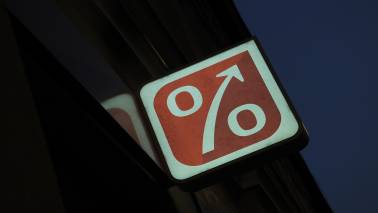Here’s a look at how political parties performed in the 2013 Assembly election across various ecological regions
Arithmetic permutations and combinations are being calculated as the crucial Assembly elections inch closer in Chhattisgarh, Madhya Pradesh, Mizoram, Rajasthan and Telangana.
After 15 years in power in Madhya Pradesh, the Bharatiya Janata Party (BJP) is facing a stiff challenge from the opposition. Chief Minister Shivraj Singh Chouhan has been at the helm of affairs for 13 out of the 15 years and political observers feel the election will boil down to his popularity.
The state will head for polls on November 28 and the counting will happen on December 11. Elections are held only for 230 constituencies and one member is nominated.
Also read: All you need to know about the 2018 assembly polls
The elections in the BJP-ruled state comes barely six months before the all-important 2019 Lok Sabha elections. The elections thus may give us a look at the state’s mood heading into the general election.
The politics in the ‘Heart of Hindustan’ has been largely binary between BJP and the Congress. However, Mayawati-led Bahujan Samaj Party (BSP) does yield significant influence in parts of the state. There are multiple smaller parties, including the newly founded SAPAKS party.
Also read: All you need to know about the battle for ‘Hindustan’s Heart’
At the state-level
In 2013, BJP had won 165 seats while the Congress had bagged 58 seats. BSP had won four seats while independent candidates clinched three seats.
BJP had vote share of 44.88 percent followed by Congress with 36.38 percent and BSP’s 6.29 percent.


The BSP and the SP picked up 6.29 percent and 1.20 percent of the votes respectively. GGP polled 5.38 percent of the votes. Independent candidates picked up a total of 1.90 percent of the votes across the state. None of the Above (NOTA) option, which was introduced ahead of the polls, was opted by 1.90 percent voters in the state.
Also read: Key factors likely to impact the election
Here’s a look at how parties performed in the 2013 assembly election across various ecological regions:
Chambal
Districts: Ashok Nagar, Bhind, Datia, Guna, Gwalior, Morena, Sheopur and ShivpuriTotal seats in the region: 34
The northernmost region of Madhya Pradesh is expected to be the tensest battleground. Both BJP and Congress have their eyes on this region.
The Gwalior-Chambal region consists of a total of 34 assembly seats. More importantly, the erstwhile royal family of Gwalior is considered have an influential factor in the polls.
The family is now headed by Jyotiraditya Scindia, Congress’ Member of Parliament from Guna.
In 2013, BJP had won 20 seats in the region followed by 12 by the Congress. The BSP had managed to win two seats here.
The region has a high concentration of Scheduled Caste (SC) voters, especially in Datia, Gwalior, Morena and Bhind districts, usually considered the core component of BSP’s voter base.
 While BSP’s seat share is low, its vote share in constituencies it contests is as high as 6.42 percent in 2013 and was as high as 9.08 percent in 2008. That is enough to play a spoiler for either of its opponents.
While BSP’s seat share is low, its vote share in constituencies it contests is as high as 6.42 percent in 2013 and was as high as 9.08 percent in 2008. That is enough to play a spoiler for either of its opponents.
According to an analysis by the Hindustan Times, BSP has played spoiler for the Congress higher number of times than for the BJP in the last three elections. The BSP and Congress fighting each other had denied Congress at least 22 seats in 2003, 41 seats in 2008 and 34 seats in 2013.
Vindhyan
Districts: Anuppur, Rewa, Satna, Shahdol, Sidhi, Singrauli and UmariaTotal seats in the region: 30
The fight in the easternmost region was closer than any other region. BJP won 16 seats and was closely followed by Congress with 12 seats. BSP won two seats.

The region, bordering Chhattisgarh and Uttar Pradesh, has high concentration of Scheduled Caste (SC) and Scheduled Tribe (ST) voters.
Malwa
Districts: Agar Malwa, Alirajpur, Dewas, Dhar, Indore, Jhabua, Mandsaur, Neemuch, Rajgarh, Ratlam, Shajapur and UjjainTotal seats in the region: 55
This region lies on the western flank of the state bordering Gujarat and Rajasthan and is one of the largest ecological regions of the state.
In 2013, BJP had swept the region by winning 49 out of the 55 seats here. Congress won five seats while an Independent candidate won one seat.
Congress had performed much better in this region in 2008. It had won 25 seats, behind BJP’s 29. An Independent candidate had also managed to clinch a seat.

The region includes two large urban areas of Indore and Ujjain. The BJP won all seven seats in Ujjain and won eight out of the nine seats in Indore.
The region also includes Mandsaur, which is the epicentre of the agrarian crisis. The Congress is hoping to make gains here.
Central districts
Districts: Bhopal, Damoh, Raisen, Sagar, Sihor and VidishaTotal seats in the region: 32
The central districts include capital Bhopal and its surrounding areas. This is another region that BJP had swept in 2013. The saffron party had won 25 seats in the region. Congress won six seats while an Independent candidate won one seat.

Among all seats in the capital city, Congress could win only the Bhopal Uttar constituency. Chief Minister Shivraj Singh Chouhan retained Vidisha seat.
Bundelkhand
Districts: Chhatarpur, Panna, Tikamgarh and Niwari which was created on October 1Total seats in the region: 14
This region, adjacent to Chambal and along Uttar Pradesh, comprises 14 assembly seats. In 2013, BJP had won 10 seats here while Congress bagged the remaining four.

Similar to the Chambal region, Bundelkhand also has a high concentration of SC voters.
Southern Districts (Satpuda)
Districts: Balaghat, Barwani, Betul, Burhanpur, Chhindwara, Dindori, Harda, Hoshangabad, Katni, Khandwa, Khargone, Jabalpur, Mandla, Narsinghpur and SeoniTotal seats in the region: 65

The region borders Maharashtra and Chhattisgarh. In the 15 districts that make up the region, BJP had won 45 out of the 65 seats here. Congress had finished a distant second with 19 seats. An Independent candidate also tasted success here.
The region has a significant ST population. However, their spread is sparse. This is one of the regions where the Congress would be hopeful of making inroads into.
Key urban seats
Performance of political parties can also be examined according to the performance in urban areas.
The five largest cities — Bhopal, Indore, Gwalior, Jabalpur and Ujjain — houses around 70 lakh people.
The five cities have a total of 36 assembly seats. Congress’ performance in these seats was dismal in 2013. BJP had won 30 while the Congress had won six seats.

The Congress was able to win just one seat each in Bhopal and Indore and two each in Gwalior and Jabalpur. The BJP had swept all seven seats in Ujjain.
Census data shows that Bhopal, Indore and Jabalpur have relatively higher minority population. The two cities, along with Ujjain have high concentration of SCs.
Read more on the 2018 Madhya Pradesh Assembly Polls 2018 here.














